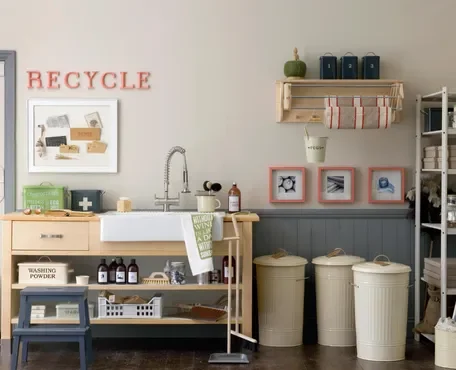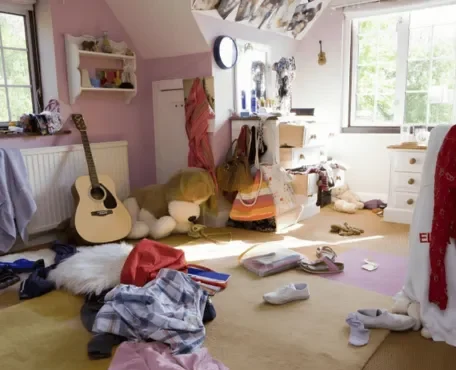
Furnishing a new home can be an exciting and sometimes overwhelming task. Whether you’ve just purchased your first house, moved to a new apartment, or are simply looking to refresh your living space, making the right choices when it comes to furniture and decor is essential. In this article, we’ll explore important tips to consider when furnishing a new home to ensure that you create a comfortable, functional, and aesthetically pleasing living environment.
Furnishing a new home is a significant undertaking, but with careful planning and thoughtful consideration of the tips mentioned in this article, you can create a living space that is both functional and aesthetically pleasing. Remember to stick to your budget, prioritize quality and comfort, and take your time to make well-informed decisions. With the right approach, your new home will become a place of comfort and joy for years to come.
1.Plan and Budget
The first step in furnishing a new home is to establish a clear plan and budget. Without these, you might find yourself overspending or making hasty decisions that you could later regret. Start by listing the rooms you need to furnish, and then prioritize them based on daily use. Allocate a budget for each room, including furniture, decor, and any necessary renovations.
2.Measure Your Space
Before you start shopping, it’s crucial to measure your available space accurately. Knowing the dimensions of your rooms and the layout will help you choose furniture that fits perfectly. Don’t forget to measure doorways, hallways, and other access points to ensure that the furniture can be moved into your home without any issues.
3.Consider Your Lifestyle
When furnishing your new home, consider your lifestyle and how you plan to use each room. If you have a family, opt for durable, stain-resistant fabrics and child-friendly furniture. If you’re a single professional, you may prioritize a sleek and minimalist design. Think about how you live and what you need in terms of comfort and functionality.
4.Invest in Quality
While it can be tempting to go for inexpensive furniture, investing in quality pieces will pay off in the long run. High-quality furniture tends to be more durable and can withstand the test of time. It may be pricier upfront, but it’s often a smarter choice as it will require fewer replacements or repairs over the years.
5.Mix and Match Styles
Mixing and matching furniture styles can create a unique and visually appealing home. Don’t feel restricted to sticking to a single design style. Blend modern and vintage pieces or combine traditional and contemporary elements to add personality to your space. Just be sure to maintain a cohesive color palette and balance in your design.
6.Prioritize Comfort
Comfort should be a top priority when furnishing your home, especially in areas where you’ll spend a lot of time, such as the living room and bedroom. Invest in a comfortable sofa, supportive mattresses, and ergonomic chairs. Test furniture in-store whenever possible to ensure it meets your comfort standards.
7.Choose Functional Furniture
Multifunctional furniture can be a lifesaver, especially in smaller spaces. Consider items like sleeper sofas, storage beds, or dining tables with extensions. These pieces can maximize your living space and make it more versatile for different activities.
8.Lighting Matters
Good lighting can transform the mood and atmosphere of a room. While natural light is ideal, invest in proper lighting fixtures, including overhead lights, task lighting, and ambient lighting. Layering different types of lighting will allow you to adjust the ambiance to suit your needs.
9.Personalize with Decor
Once you have the basics in place, personalize your home with decor that reflects your personality and style. Use artwork, rugs, throw pillows, and other decorative items to add character to your space. These small touches can make a big difference in the overall look and feel of your home.
10.Stay Organized
Organization is key to maintaining a comfortable living space. Consider incorporating storage solutions, such as shelves, cabinets, and closet systems, to keep your home clutter-free. An organized home is not only more functional but also more visually appealing.
11.Take Your Time
Don’t rush the furnishing process. It’s perfectly normal for a new home to take some time to come together. Take your time to find the right pieces that fit your budget and style. Avoid making impulsive decisions that you might regret later.
12.Sustainability and Eco-Friendly Choices
Consider the environmental impact of your furniture choices. Opt for sustainable and eco-friendly materials whenever possible. Look for furniture made from reclaimed wood, bamboo, or materials with low chemical emissions. These choices are not only better for the planet but can also contribute to a healthier indoor environment.
13.Research and Inspiration
Before you start shopping, it’s a good idea to do some research and gather inspiration for your home decor. You can use resources like interior design magazines, websites, social media platforms (such as Pinterest and Instagram), and even home improvement TV shows to explore different styles and design ideas. By having a clear vision of what you like, you can make more informed choices when selecting furniture and decor.
14.Consider Longevity
While it’s important to choose furniture and decor that reflect your current lifestyle and preferences, it’s also wise to think about the long term. Trends come and go, so opt for timeless and classic pieces for larger investments like sofas, dining tables, and bedroom sets. You can then incorporate trendy elements through smaller, more affordable items that are easier to replace as styles change.
15.Customization
Consider customizing furniture or decor to make your new home truly unique. Many furniture stores offer customization options, allowing you to select the fabric, finish, or design details to your liking. Custom pieces can perfectly fit your space and reflect your personal style.
16.Utilize Second-Hand and Vintage Finds
Don’t overlook the charm of second-hand and vintage furniture. Thrift stores, flea markets, and online marketplaces often offer hidden gems at a fraction of the cost of new items. Refurbishing or upcycling old furniture can also be a fun DIY project that adds character to your home.
17.Feng Shui and Flow
To create a harmonious living environment, consider the principles of feng shui, which focus on the flow of energy (chi) through your space. Pay attention to the arrangement of furniture, avoid clutter, and balance the elements in your home. Properly aligned furniture can help improve the energy and create a sense of well-being.
18.Consult with a Professional
If you’re feeling overwhelmed or unsure about your decorating skills, don’t hesitate to seek professional help. Interior designers can provide expert advice on furniture selection, layout, and decor. They can help you make the most of your space while ensuring it aligns with your personal style.
19.Maintenance and Care
Once you’ve furnished your new home, remember that maintenance and care are essential for keeping your furniture and decor in excellent condition. Follow manufacturer’s guidelines for cleaning and maintenance to ensure that your investments last for years.
20.Don’t Forget Outdoor Spaces
If your new home includes outdoor spaces like a patio, balcony, or garden, don’t neglect them. Consider outdoor furniture, plants, and decor to make the most of your exterior living areas. These spaces can become extensions of your indoor living space and provide opportunities for relaxation and entertaining.
In conclusion, furnishing a new home is an exciting journey that allows you to create a space that reflects your personality and meets your functional needs. With careful planning, a defined budget, and an understanding of your personal style and lifestyle, you can make informed choices that result in a comfortable and aesthetically pleasing living environment. By considering all these important tips, your new home will become a sanctuary where you can enjoy many happy moments for years to come.
Certainly, here are some frequently asked questions related to furnishing a new home and their answers:
Q1: How can I create a budget for furnishing my new home?
A1: To create a budget, start by listing the rooms you need to furnish and allocating a budget for each room. Consider the cost of furniture, decor, and any potential renovations. It’s essential to be realistic about your financial situation and set aside some funds for unexpected expenses.
Q2: What are the advantages of investing in quality furniture?
A2: Quality furniture tends to be more durable and long-lasting. While it may have a higher upfront cost, it can save you money in the long run by requiring fewer replacements or repairs. It also often comes with better warranties and is more comfortable.
Q3: How can I mix and match different furniture styles successfully?
A3: Mixing and matching styles can create a unique and visually appealing home. Start with a unifying element, such as a color scheme or a common design feature. Then, combine different styles, but ensure there is a sense of balance and harmony. Experiment and trust your instincts until you achieve a look that you love.
Q4: What should I look for in comfortable furniture?
A4: Comfortable furniture should have good support, cushioning, and be made from quality materials. When shopping for sofas, chairs, and mattresses, consider factors like foam density, upholstery, and ergonomics. Sit and test the furniture in-store if possible to gauge comfort levels.
Q5: How can I create a more eco-friendly home when furnishing it?
A5: Look for furniture made from sustainable materials like bamboo, reclaimed wood, or recycled materials. Check for certifications such as FSC (Forest Stewardship Council) for wood products or GREENGUARD for low-emission furniture. Consider buying second-hand or upcycling furniture to reduce waste.
Q6: How can I incorporate feng shui principles into my home decor?
A6: Feng shui principles involve proper furniture placement to create a harmonious flow of energy. Balance is key, so ensure your space has a good mix of elements, is clutter-free, and that furniture is arranged to encourage the smooth flow of chi. Different areas of your home may require specific feng shui considerations.
Q7: How do I care for and maintain my furniture and decor items?
A7: Follow the manufacturer’s guidelines for cleaning and maintenance for each piece. Regular dusting, cleaning, and rotating cushions can help keep your furniture looking its best. Additionally, avoid exposing items to direct sunlight or extreme temperatures, as these can damage materials and fade colors.
Q8: Should I hire an interior designer to help with my home furnishing project?
A8: Hiring an interior designer is a great option if you feel overwhelmed or unsure about your decorating skills. Designers can provide expert advice on furniture selection, layout, and decor, helping you achieve the desired look and functionality for your space.
Q9: Can I furnish my outdoor spaces in the same style as my indoor spaces?
A9: You can certainly extend your indoor style to outdoor spaces. Just make sure the furniture and decor you choose are designed for outdoor use and can withstand weather conditions. Consider using similar color schemes and styles to create a cohesive transition from indoors to outdoors.
Q10: How long does it typically take to fully furnish a new home?
A10: The time it takes to furnish a new home can vary significantly depending on the size of your space, your budget, and the availability of furniture. It may take several weeks to several months to fully furnish your home, so be patient and take your time to make well-informed decisions.








